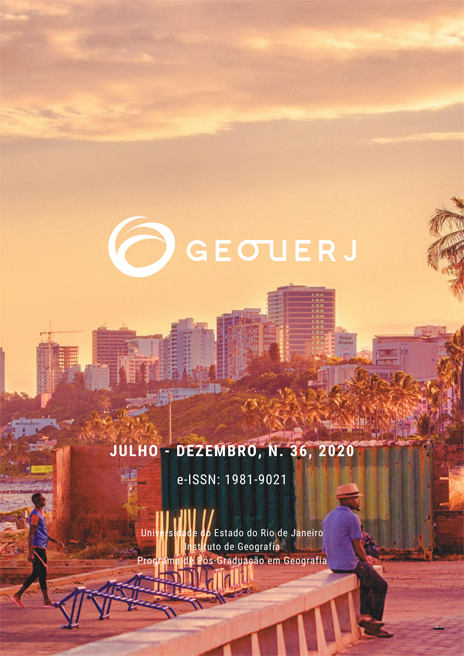REGIONAL COMMERCIAL AVIATION IN THE STATE OF RIO DE JANEIRO: PROSPECTS REGARDING REGIC 2018
DOI:
https://doi.org/10.12957/geouerj.2020.58673Keywords:
Commercial aviation. Airports. Region. Urban network. State of Rio de Janeiro.Abstract
The state of Rio de Janeiro, despite of having a small territorial area in relation to the other Brazilian federative units, presents socio-spatial integration difficulties, deficient mobility and a strong socio-economic polarization in the Metropolitan Region of its capital. Among a series of factors that have influenced this picture, historically, there are since the evolution of its political-administrative division, to the choice for the road mobility policy and even its peculiar topography. The presence or absence of air routes in the state, that is today the main transport flow in the globalized world, are both cause and consequence of an uneven and combined socio-spatial development. In addition, the analytical study of regional commercial aviation is, at the moment, both a diagnosis and action field for public policies, specifically for our state. In this article, we conducted a qualitative and exploratory research on the regional commercial aviation development situation in the state of Rio de Janeiro and, therefore, we made a bibliographic research, consulted documentary sources such as state and federal laws, articles from newspapers and specialized magazines, and the data from the Population Arrangements and Urban Concentrations of Brazil research and the Cities Influence Regions (REGIC) research, both from IBGE.Downloads
Download data is not yet available.
Downloads
How to Cite
FERNANDES, Ulisses da Silva; BARROS, Gabriel Teixeira. REGIONAL COMMERCIAL AVIATION IN THE STATE OF RIO DE JANEIRO: PROSPECTS REGARDING REGIC 2018. Geo UERJ, Rio de Janeiro, n. 37, p. e58673, 2020. DOI: 10.12957/geouerj.2020.58673. Disponível em: https://www.e-publicacoes.uerj.br/geouerj/article/view/58673. Acesso em: 23 sep. 2025.
Issue
Section
Articles
License
The copyright of articles published in Geo UERJ belongs to their respective authors with rights to first publication conceded to the journal. Every time that the article is cited and reproduced in institutional repositories or personal and professional web pages the link to the journal web page must be provided Geo UERJ.

The articles are simultaneously licensed under theCreative Commons Atribuição-Não Comercial-Compartilha Igual 4.0 Internacional.


